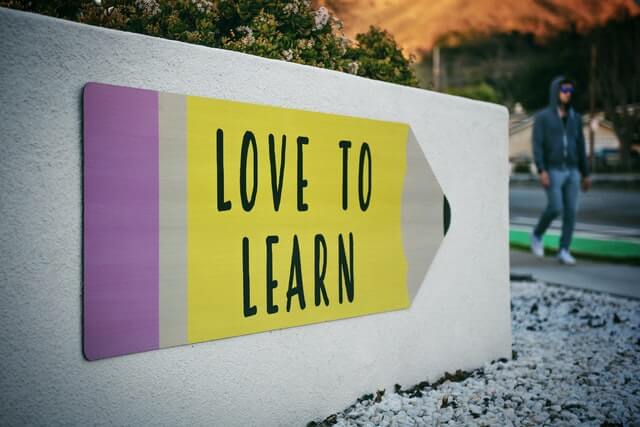Last Updated on March 19, 2022 by QCity Editorial Stuff
Curriculum and instruction are two important aspects of educating students. The curriculum is the plan or framework for what is taught in a school, while instruction is how it is delivered to students. There are many differences between curriculum and instruction, which this article will explore. While both are important, curriculum plays a more foundational role, while instruction is more hands-on. Curriculum can be thought of as the skeleton of a learning experience, while instruction brings it to life.
At its core, curriculum refers to the content or topics that will be covered in a course or program. Instruction, on the other hand, refers to how that content is delivered – including methods and strategies used by teachers to help students learn. In many cases, good instruction can help make up for weaknesses in a curriculum. Conversely, weak instruction can’t overcome a strong curriculum.
The two most commonly used terms in education are curriculum and instruction. Many teachers may not be aware of how the two differ, so this blog post will outline some key differences.
The curriculum is all about what you teach; it consists of the learning goals that are set for students to achieve during their time in your class or school. Instruction is more about how you teach them; it includes things like pacing, teaching technique, grading policies, etc. These two concepts go hand-in-hand because without a curriculum there would be no instruction and vice versa. The best way to think about these concepts is as follows: Curriculum sets out an overarching plan for what’s taught whereas Instruction guides how to teach it well.
Comparison between Curriculum and Instruction
| Parameters of Comparison | Curriculum | Instruction |
| System | The curriculum is the course of study | instruction includes teaching methods |
| Focus | Instruction focuses on student learning | the curriculum focuses on what students are expected to learn. |
| Determine | The curriculum is typically determined by a school’s administration or teachers | instruction can be influenced by many factors including the teacher and parents |
| Outline | A curriculum outlines what topics will be taught in each grade level or subject area | an instructional plan may only focus on one topic at a time. |
| Change | The curriculum must change with time and culture | the instruction tells them how they are supposed to learn it |
What is Curriculum?
The curriculum is a word that is commonly used and often misunderstood. Curriculum can be defined as the courses or subjects that are taught in schools. It can also be defined as a plan or program of education. The curriculum may include the syllabus, course content, course goals, and methods of instruction. It is important to understand what curriculum is because it affects our children’s education.
The curriculum is a hot topic in education these days. What should be included in the curriculum? How much should teachers be able to choose what they teach? What is the best way to design a curriculum? These are all important questions that need answers. The curriculum has come to mean a lot of different things to different people, but there are some core components that almost everyone can agree on. In this post, we’ll explore what curriculum is and some of the issues around it. Stay tuned for future posts where we’ll delve into more detail about each of these topics.

What is Instruction?
Instruction is a process that educators use to help students learn. It involves providing guidance and feedback while they are working on a task. Instructors must be sure to provide clear instructions so that students can understand what they are supposed to do. Additionally, instructors need to monitor student progress and offer assistance when necessary. By using instruction, educators can help students achieve their educational goals.
Instruction is the imparting or acquisition of knowledge, understanding, or skill. It encompasses teaching and learning methods, as well as educational content. Instructional design is a process used to create instructional materials and optimize learning outcomes. To be effective, instruction must be tailored to the individual learner’s needs and preferences. Many factors go into creating an effective instructional experience, such as the type of information being conveyed, the level of learner engagement required, and the delivery method. Effective instruction can help learners acquire new skills, deepen their understanding of complex concepts, and develop critical thinking skills.

10 Differences Between Curriculum and Instruction
1. Curriculum is the course of study, while instruction includes teaching methods.
2. Instruction focuses on student learning, while curriculum focuses on what students are expected to learn.
3. Curriculum is typically determined by a school’s administration or teachers, while instruction can be influenced by many factors including the teacher and parents.
4. A curriculum may be based on state standards for education, but an instructional approach might not always align with those standards.
5. A curriculum outlines what topics will be taught in each grade level or subject area; an instructional plan may only focus on one topic at a time.
6. When deciding between curricula for your child’s education it is important to consider the content of both curricula as well as your personal preferences about how you want them to learn.
7. Curriculum is the academic content that needs to be covered.
8. Instruction is how the curriculum should be taught.
9. The curriculum must change with time and culture, but instruction can remain constant.
10. Curriculum includes what students are expected to know or do; instruction tells them how they are supposed to learn it.
Interesting Statistics or Facts of Curriculum
1. Curriculum is the set of courses that are taught in a school or college.
2. The goal of the curriculum is to provide students with skills and knowledge necessary for life after graduation.
3. An example of a curriculum would be what is taught at a high school, college, or university.
4. There are different types of curriculums including liberal arts, vocational education, and STEM education.
5. One way to measure the quality of a school’s curriculum would be by looking at their standardized test scores.
6. Common examples include SATs and ACTs which determine how well students perform on these exams based on what they have learned from their coursework over the past few years.
Interesting Statistics or Facts of Instruction
1. Instruction is the fastest growing profession in America.
2. The average instructional salary ranges from $36,000 to $82,000.
3. Instructional salaries are higher than the national median household income of $51,939.
4. There are approximately 3 million instructional jobs available nationwide with an expected growth rate of 12% by 2026.
5. There are about 13 million students enrolled in public elementary and secondary schools across the country.
6. A certificate or degree in instruction can lead to a career as an instructor at a community college or trade school or as a teacher for K-12 education systems like public schools and private schools.
Conclusion
Curriculum and instruction are both important in the educational process. The difference is that curriculum defines what is taught while instructional methods define how it is taught. Your school district will have a set of curricula for your specific grade level, but you can still use different instructional techniques to teach material from this curriculum. For example, if your sixth graders were learning about fractions, they could learn by using their hands or with manipulatives like blocks or Legos. There are many ways teachers can approach teaching content within any given subject matter and we hope these tips help get you started on the right path.
References:
Resource 01: https://en.wikipedia.org/wiki/Curriculum
Resource 02: https://www.merriam-webster.com/dictionary/instruction





